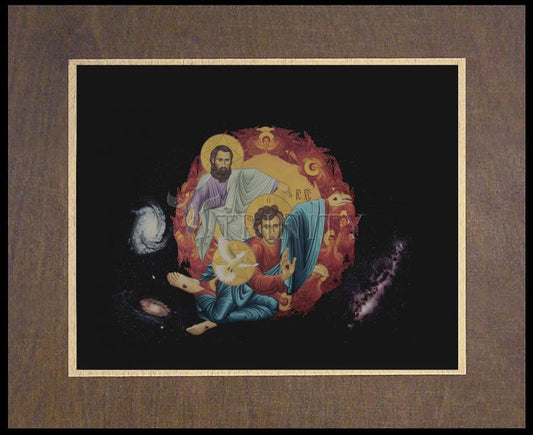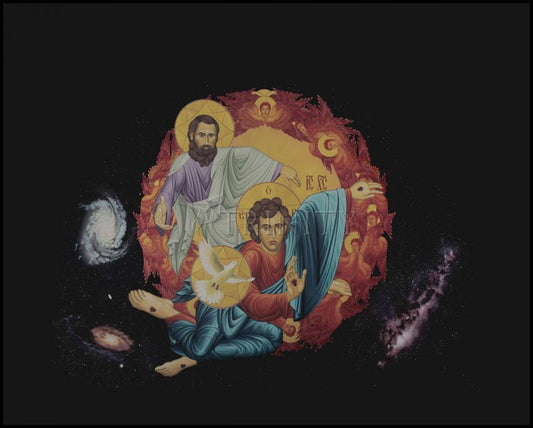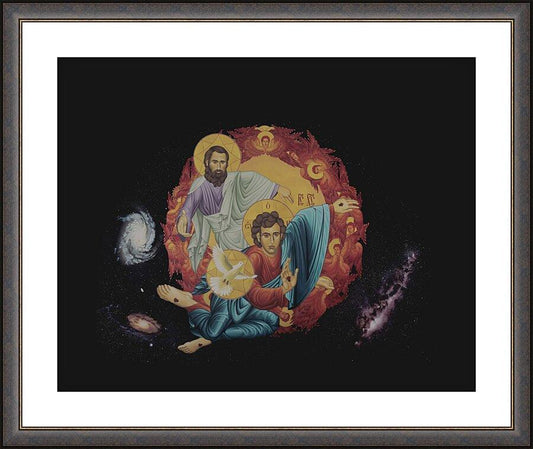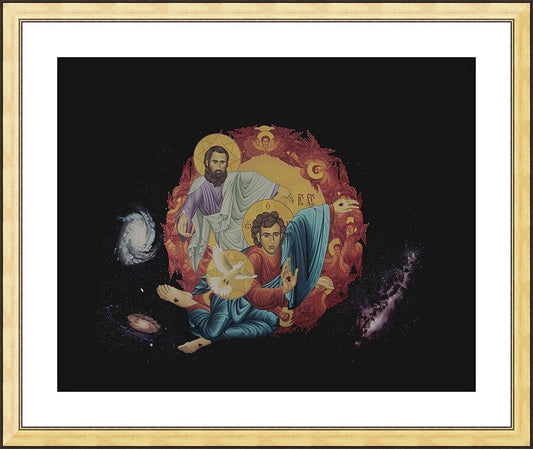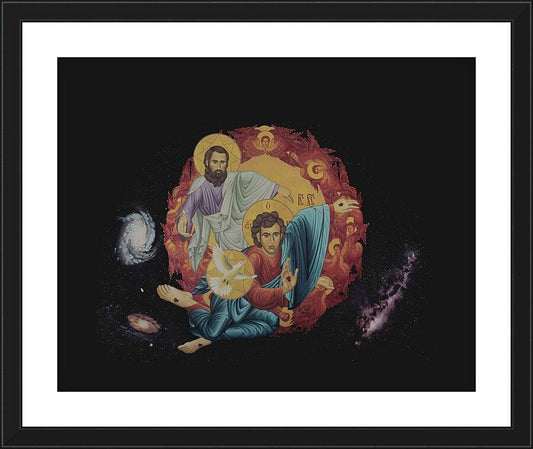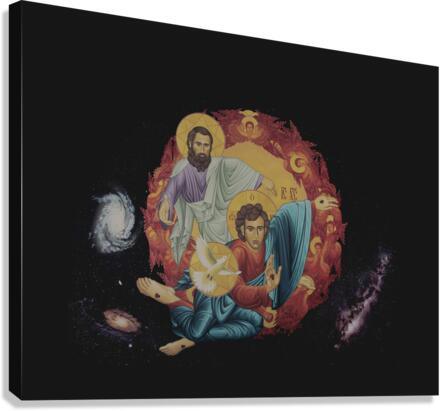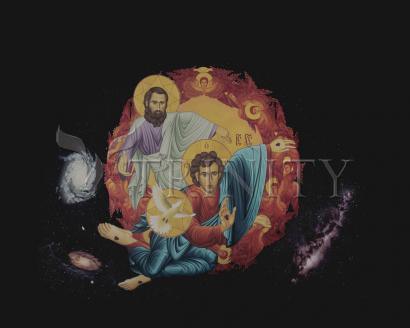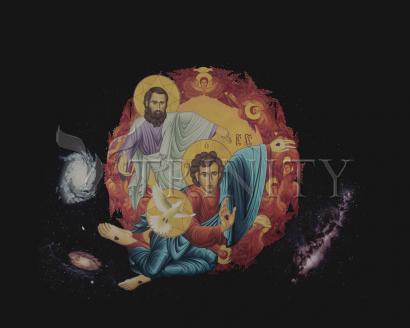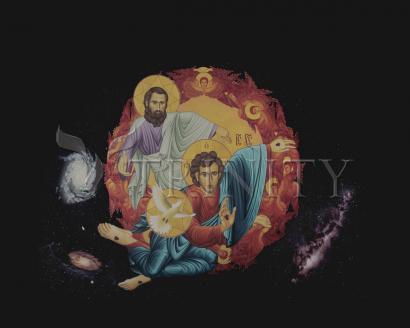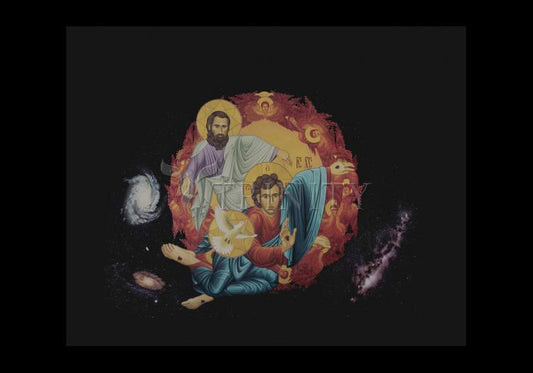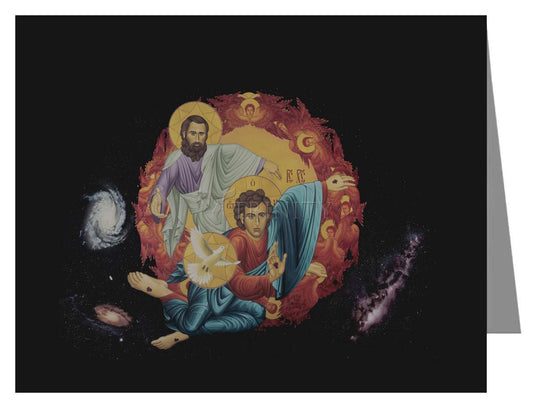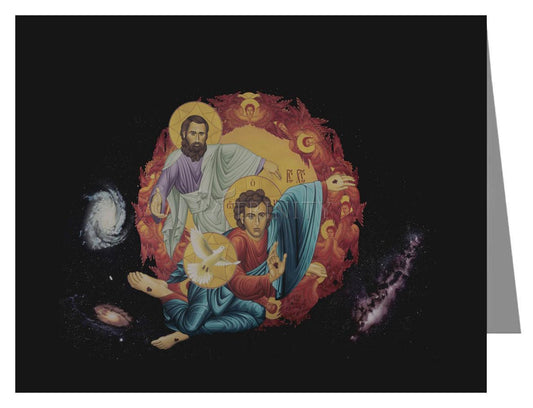The Trinity is the term employed to signify the central doctrine of the Christian religion " the truth that in the unity of the Godhead there are Three Persons, the Father, the Son, and the Holy Spirit, these Three Persons being truly distinct one from another.
Thus, in the words of the Athanasian Creed: "the Father is God, the Son is God, and the Holy Spirit is God, and yet there are not three Gods but one God." In this Trinity of Persons the Son is begotten of the Father by an eternal generation, and the Holy Spirit proceeds by an eternal procession from the Father and the Son. Yet, notwithstanding this difference as to origin, the Persons are co-eternal and co-equal: all alike are uncreated and omnipotent. This, the Church teaches, is the revelation regarding God's nature which Jesus Christ, the Son of God, came upon earth to deliver to the world: and which she proposes to man as the foundation of her whole dogmatic system.
In Scripture there is as yet no single term by which the Three Divine Persons are denoted together. The word trias (of which the Latin trinitas is a translation) is first found in Theophilus of Antioch about A.D. 180. He speaks of "the Trinity of God [the Father], His Word and His Wisdom (To Autolycus II.15). The term may, of course, have been in use before his time. Afterwards it appears in its Latin form of trinitas in Tertullian (On Pudicity 21). In the next century the word is in general use. It is found in many passages of Origen ("In Ps. xvii", 15). The first creed in which it appears is that of Origen's pupil, Gregory Thaumaturgus. In his Ekthesis tes pisteos composed between 260 and 270, he writes:
There is therefore nothing created, nothing subject to another in the Trinity: nor is there anything that has been added as though it once had not existed, but had entered afterwards: therefore the Father has never been without the Son, nor the Son without the Spirit: and this same Trinity is immutable and unalterable forever (P.G., X, 986).
It is manifest that a dogma so mysterious presupposes a Divine revelation. When the fact of revelation, understood in its full sense as the speech of God to man, is no longer admitted, the rejection of the doctrine follows as a necessary consequence. For this reason it has no place in the Liberal Protestantism of today. The writers of this school contend that the doctrine of the Trinity, as professed by the Church, is not contained in the New Testament, but that it was first formulated in the second century and received final approbation in the fourth, as the result of the Arian and Macedonian controversies. In view of this assertion it is necessary to consider in some detail the evidence afforded by Holy Scripture. Attempts have been made recently to apply the more extreme theories of comparative religion to the doctrine of the Trinity, and to account for it by an imaginary law of nature compelling men to group the objects of their worship in threes. It seems needless to give more than a reference to these extravagant views, which serious thinkers of every school reject as destitute of foundation.



